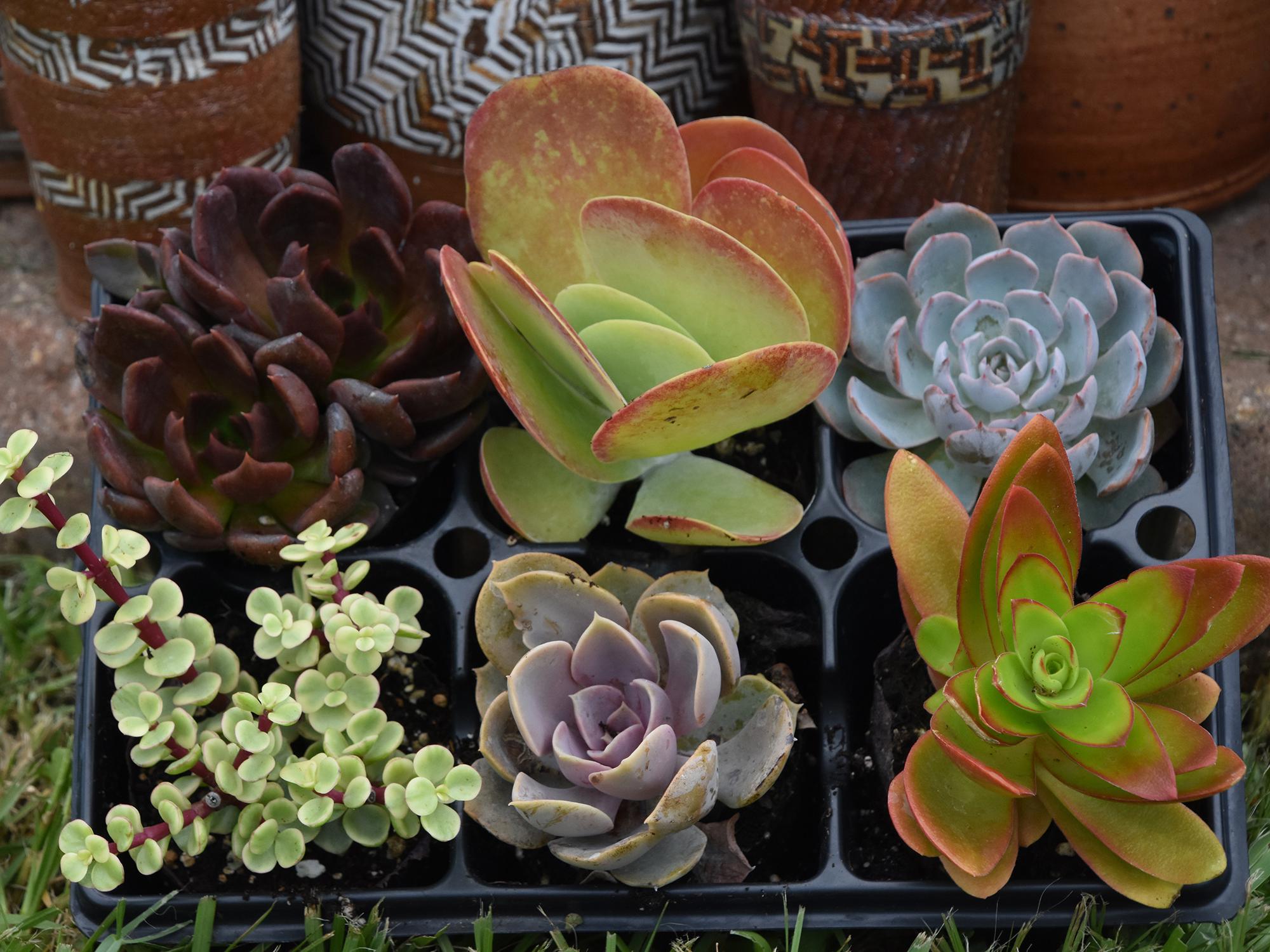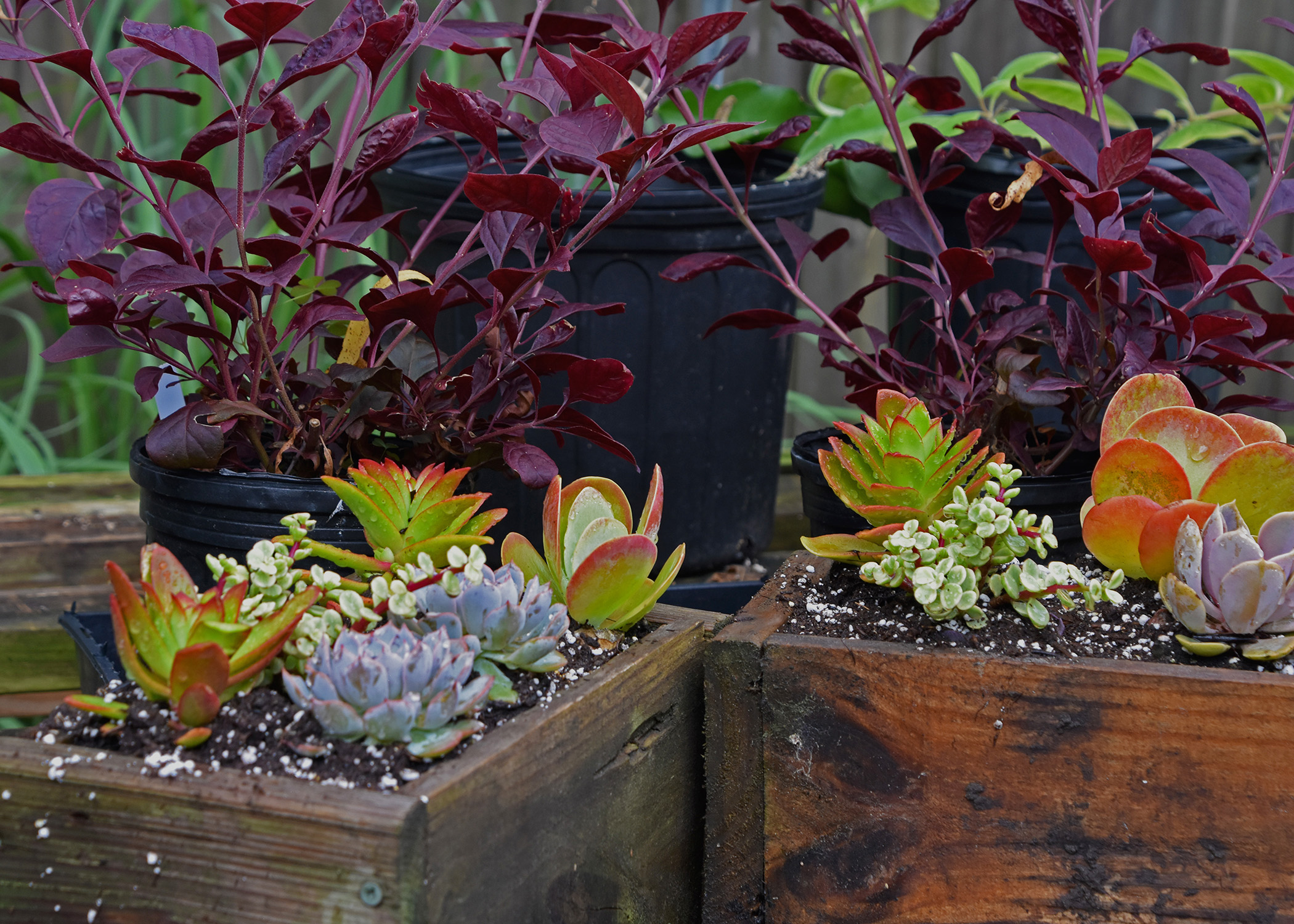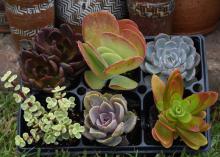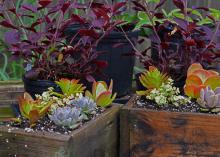Information Possibly Outdated
The information presented on this page was originally released on August 1, 2016. It may not be outdated, but please search our site for more current information. If you plan to quote or reference this information in a publication, please check with the Extension specialist or author before proceeding.
Succulents easily replace summer-weary plants
Because this is the first week of August, we can rest assured that it’s going to be hot in our Mississippi gardens and landscapes.
To tell you the truth, I like the heat. We visited Las Vegas in July several years ago and toured around that part of the country, even going to Death Valley. Sure it was hot, but the humidity was something like 9 percent -- that old dry heat.
But here in Mississippi, we get to enjoy the heat plus the high humidity. We wilt, and many of our summer-flowering plants are starting to look just as ragged. So what else can we use?
This past weekend, I was out looking for some replacements and found an absolute brilliant idea that brought me back to a group of plants that don’t need much water and are versatile and basically carefree: succulents! We have even made several Southern Gardening TV segments featuring this trendy group of plants. Go to http://extension.msstate.edu/shows/southern-gardening to check them out.
Let’s face it: There are literally hundreds of succulents available with a dizzying array of colors and textures. And the variety of species names, such as Crassula, Echerveria, Euphorbia and Kalanchoe, can just add to the confusion.
Succulents are plants with soft, juicy leaves and stems. They are good choices for low-water-use gardening. Succulents offer a wide variety of foliage and flower colors. Growth habits include everything from ground-hugging creepers to upright growers.
Succulents do not tolerate a soil that is too wet, so planting in well-drained soil is a must. Pruning is generally not required because the plants tend to be slow growers. You don’t really need to fertilize very often, but a little slow-release fertilizer can promote faster growth.
A trip to your garden center in search of succulents can be a little daunting. Looking at the typical display rack and trying to decide which individual plant to buy can be overwhelming. The brilliant idea I found at the garden center was a collection of various succulents all packaged together. This made the buying decision very easy.
When grown outside, succulents are perfect for container gardens as long as the location gets about six hours of full sun. I brought my collection home and planted a couple of combination containers made from recycled fence boards for a rustic look.
Since many succulents are from frost-free regions, planting in containers makes them easy to bring inside during cold weather. I’m lucky being on the Gulf Coast; I leave my plants out all year.
Succulents are also easy plants to grow indoors. They look great on windowsills and bright office spaces.
Succulents are quite possibly the easiest plants to propagate. In the spring, clip off healthy stems before flower buds have formed. These clippings can simply be spread out on potting media in a container and placed in the shade. Mist them with water every couple of days, and roots will start forming after a couple of weeks.
If you’re not already growing succulents, consider trying some for really carefree gardening indoors or out.











